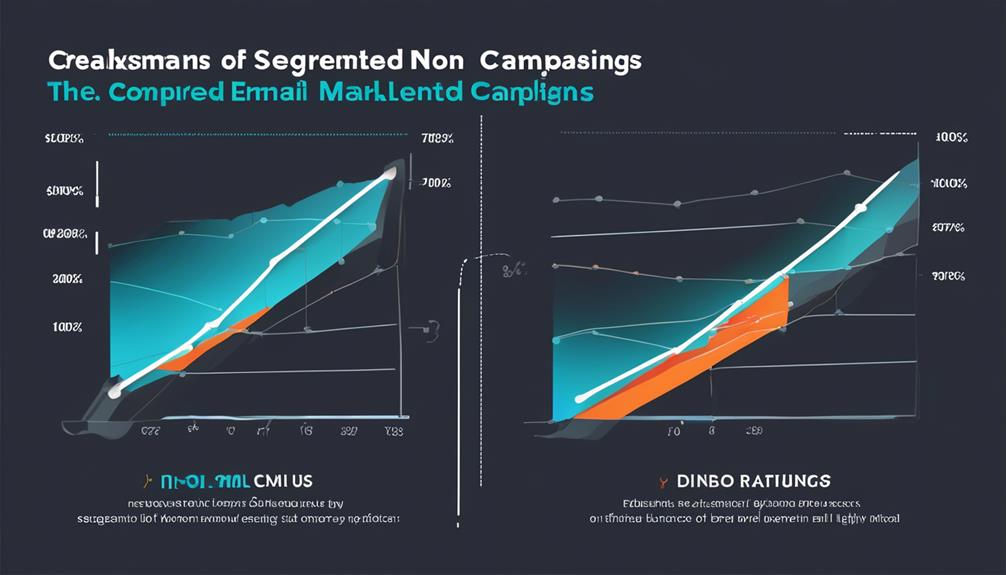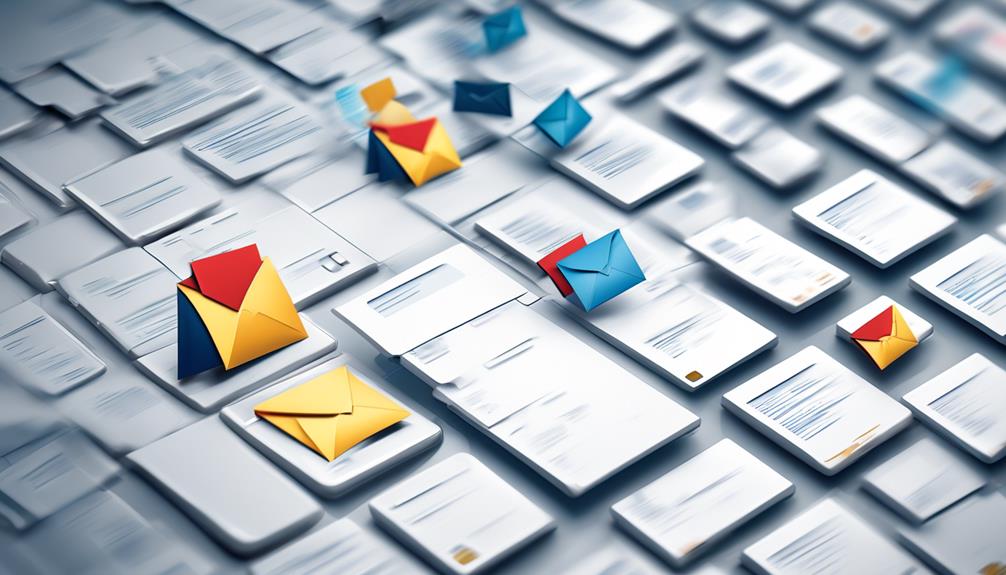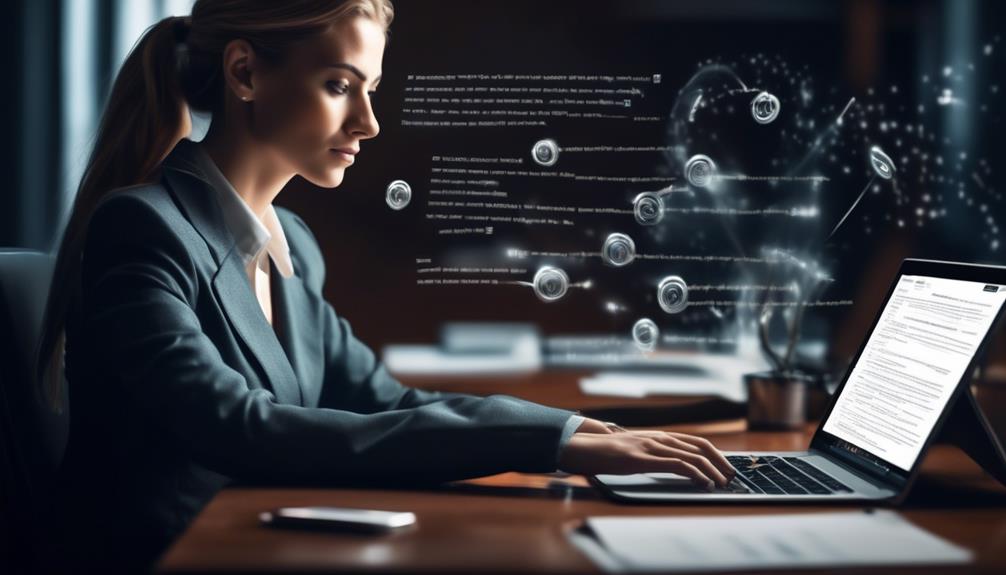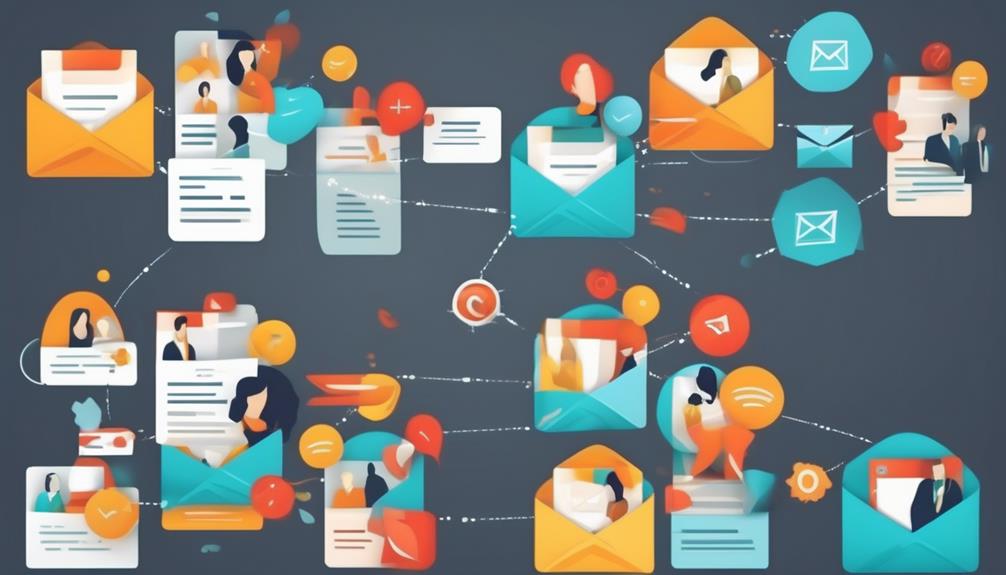We understand that adding customer segmentation to your email marketing strategy may seem like a daunting task, requiring extra time and resources.
However, the truth is that customer segmentation is so effective because it enables businesses to deliver personalized and relevant content to their subscribers, ultimately leading to higher engagement and conversions.
But what specific strategies and tools make customer segmentation in email marketing so powerful?
Let's explore the key factors that contribute to its effectiveness and how they can impact your email marketing efforts.
Key Takeaways
- Customer segmentation in email marketing leads to increased open rates and click-through rates, improved conversion rates and ROI, and a decreased number of unsubscribers.
- Targeted emailing is important for improved relevance of content, enhanced ROI, more effective use of resources, higher open and click-through rates, and increased customer satisfaction.
- Email segmentation enhances campaign performance by tailoring content to each segment's needs and behaviors, resulting in higher engagement rates, better open and click-through rates, reduced unsubscribes, and increased conversions and revenue.
- Customer segmentation in email marketing improves the overall customer experience by providing personalized content and targeted communication, fostering long-term engagement and loyalty, and avoiding generic content. Additionally, it increases return on investment by boosting email engagement, leveraging segmentation capabilities for personalized experiences, and collecting and analyzing data for tailored content.
Benefits of Customer Segmentation
We have observed that customer segmentation offers a range of compelling benefits for email marketing.
By segmenting customers based on data, email marketing strategies can see increased open rates and click-through rates. This targeted approach ensures that customers receive content relevant to their needs and interests, resulting in improved conversion rates and ROI.
Furthermore, customer segmentation decreases the number of unsubscribers, as customers are less likely to opt out when receiving personalized content. The enhanced customer experience through personalized content also fosters loyalty and satisfaction, ultimately benefiting the brand's reputation.
Moreover, targeted promotions based on segmentation lead to better campaign performance, as they're more likely to resonate with specific customer segments, driving higher engagement and conversions.
Importance of Targeted Emailing

The importance of targeted emailing lies in its ability to deliver personalized and relevant content to specific customer segments, driving higher engagement and ultimately improving key email marketing metrics. When considering the importance of targeted emailing, it's essential to recognize the impact it can have on the success of email marketing campaigns.
Here are a couple of reasons why targeted emailing is crucial:
- Improved Relevance: Segmenting your audience allows for the delivery of content that's tailored to the specific interests, behaviors, and needs of each group, making your emails more relevant and engaging. By targeting campaigns based on demographics, preferences, behavior, location, and wishlist data, you can ensure that your emails resonate with each segment, leading to higher open and click-through rates.
- Enhanced ROI: Targeted campaigns result in more effective use of resources as they're directed towards groups most likely to respond positively. This can lead to improved customer experience and ultimately increased return on investment (ROI) for your email marketing efforts.
Segmented email marketing isn't just a strategy, but a critical component for achieving success in the saturated world of digital marketing. By recognizing the importance of targeted emailing, businesses can significantly enhance their email marketing performance.
Enhanced Campaign Performance
Recognizing the importance of targeted emailing, we can now direct our focus toward achieving Enhanced Campaign Performance through strategic email segmentation.
By tailoring content to each segment's needs and behaviors, Enhanced Campaign Performance can be achieved, resulting in higher engagement rates. This approach leads to better open and click-through rates, reduced unsubscribes, and increased conversions and revenue.
To attain Enhanced Campaign Performance, collecting and analyzing data is crucial for identifying patterns and insights to create distinct and actionable segments. This enables the creation of personalized and relevant content for subscribers, including targeted messaging and offers that speak directly to the needs and preferences of each segment.
Testing and optimizing elements such as subject lines, CTAs, and content, along with using tools like Mailchimp, HubSpot, or Constant Contact, are essential for achieving Enhanced Campaign Performance through email segmentation.
Ultimately, Enhanced Campaign Performance is about delivering the right message to the right audience at the right time, and email segmentation is the key to making this a reality.
Improved Customer Experience

Segmenting customers based on their preferences and behavior allows us to deliver personalized content and targeted communication, resulting in a more engaging and valuable experience for each individual.
By understanding the unique needs of different customer segments, businesses can ensure that their messages resonate with each recipient, ultimately leading to improved overall customer satisfaction.
Avoiding generic content and delivering timely, relevant communications not only enhances the customer journey but also fosters long-term engagement and loyalty.
Personalized Content
Utilizing personalized content based on customer segmentation criteria is fundamental in creating a tailored and customer-centric experience that leads to improved satisfaction and stronger engagement.
When segmenting customers, businesses can tailor content to individual preferences, leveraging customer data such as purchase history. This targeted approach allows for the creation and sending of highly relevant and personalized content, enhancing the effectiveness of email segmentation.
Targeted Communication
Improving customer experience through targeted communication involves delivering personalized and relevant content based on segmentation criteria, enhancing engagement, and driving customer satisfaction. By segmenting email lists, businesses can identify loyal customers and send them special offers, increasing customer loyalty and revenue. List segmentation also helps define customer personas and create content that converts them into paying customers. Moreover, segmenting based on past purchases allows for recommending similar items and sending targeted emails for replacement or renewal needs. Additionally, segmenting based on specific behavioral triggers, such as targeting customers who have abandoned their shopping carts, enables personalized emails with incentives to complete the purchase. This targeted approach not only increases open rates but also fosters a deeper connection with customers, ultimately improving the overall customer experience.
| Benefits of Targeted Communication |
|---|
| Enhanced Customer Engagement |
| Increased Customer Satisfaction |
| Improved Open Rates |
| Enhanced Customer Loyalty |
| Higher Revenue Generation |
Increased Return on Investment (ROI)

To maximize the return on investment through email marketing, targeted customer segmentation is essential for delivering compelling and relevant content to specific audience segments. When considering the increased return on investment, it becomes evident that customer segmentation plays a pivotal role in achieving this goal. We can see a significant impact on ROI through targeted campaigns and personalized experiences, achieved by leveraging segmentation capabilities.
Here's how customer segmentation directly contributes to increased return on investment:
- Targeted email campaigns result in higher email engagement, leading to increased open rates, clicks, and conversions, ultimately boosting ROI.
- List segmentation allows for collecting and analyzing data to understand customer behavior and preferences, enabling the delivery of tailored content that resonates with specific segments, thereby driving higher ROI.
Personalized Content Creation

When crafting personalized content, we tailor messages and offerings to specific customer segments based on their behavior, preferences, and demographics. This segmentation is the practice of dividing your customer base into distinct groups, allowing you to create more personalized and targeted content.
By segmenting your customers, you can deliver more relevant and engaging content that speaks directly to their needs and interests. Email marketing segmentation enables businesses to use the right language and messaging, resulting in higher open rates, click-through rates, and conversions.
This approach allows for the creation of content that resonates with specific customer segments, ultimately leading to increased customer satisfaction and loyalty. Effective personalized content creation involves leveraging data insights to design and deliver content that aligns with the unique preferences and behaviors of each segment.
Effective Subject Lines and Calls-to-Action

Crafting compelling subject lines and using action-oriented language in calls to action are crucial for improving email marketing performance.
By clearly conveying the value proposition to the recipient, we can increase open and click-through rates.
Personalizing subject lines and calls to action based on segment data allows for targeted effectiveness.
A/B testing can further optimize performance.
Compelling Subject Lines
In crafting compelling subject lines for email marketing, personalization and targeted messaging are crucial to increasing engagement and prompting action from recipients.
When it comes to compelling subject lines, segmentation plays a vital role in tailoring messages to specific customer segments. This not only grabs the attention of email subscribers but also makes the content more relevant to their needs and interests.
Additionally, A/B testing subject lines can help in determining the most effective language and messaging for different customer segments, ensuring that the content resonates with each group.
Furthermore, including calls-to-action within the subject lines can influence email recipients to take the desired action, ultimately leading to improved conversion rates and enhancing the overall effectiveness of targeted emails.
Action-Oriented Language
Segmentation not only enhances the relevance of email content to specific customer segments but also provides the foundation for effective action-oriented language in subject lines and calls-to-action.
Crafting action-oriented subject lines and compelling calls-to-action is essential for driving engagement and conversions in targeted email campaigns.
By personalizing subject lines and calls-to-action based on segment data, we can resonate with recipients' specific needs and interests, increasing the likelihood of interaction.
A/B testing subject lines and calls-to-action allows us to identify the most effective language for different segments, ensuring that our messaging resonates with the audience.
Continual monitoring and adjustment of subject lines and calls-to-action based on performance data is crucial for optimizing engagement and conversion rates.
Action-oriented language tailored to specific segments can significantly impact the success of email marketing efforts.
Clear Value Proposition
Tailoring subject lines and calls-to-action to provide a clear value proposition for each customer segment is crucial for driving email engagement and conversions. Effective subject lines and calls-to-action entice recipients to open and engage with the email, significantly increasing open rates and engagement.
Personalized calls-to-action based on segment data can lead to higher click-through rates and conversions. A/B testing subject lines and calls-to-action helps identify the most effective messaging for each segment. Monitoring and adjusting strategies for subject lines and calls-to-action is crucial for ongoing optimization of email marketing campaigns.
Frequently Asked Questions
Why Is Segmenting an Effective Email Marketing Strategy?
Segmenting is an effective email marketing strategy because it allows us to tailor our content to meet the specific needs and interests of different customer segments. This targeted approach results in higher open rates, click-through rates, and conversion rates, while reducing the number of unsubscribers.
What Makes Email Marketing so Effective?
We all know the age-old struggle to grab attention in the digital world. So, what makes email marketing so effective?
It's the ability to personalize content and target specific groups. Segmentation allows us to tailor our messages, leading to higher open and click-through rates, better conversions, and reduced unsubscribers.
The data speaks for itself; segmented emails deliver results. It's the strategic edge that sets successful campaigns apart.
What Are the Benefits of Segmenting Your Email List?
Segmenting our email list offers several benefits.
It allows us to tailor our content to specific customer segments, increasing the relevance and personalization of our emails.
This, in turn, leads to higher open rates, click-through rates, and ultimately, better ROI.
How Segmentation in Marketing Can Be Effective?
Segmentation in marketing can be effective through personalized targeting, tailored content, and improved campaign performance.
By dividing recipients into smaller, targeted groups based on behavioral or demographic data, we can enhance engagement and relevance.
This method allows for the delivery of more personalized and specific content to different segments, leading to higher open rates, click-through rates, and ultimately, better conversion rates.
Such tailored approaches can significantly impact the overall success of marketing campaigns.
How Does Customer Segmentation in Email Marketing Lead to Better Results?
When it comes to improving results in email marketing, customer segmentation in email marketing is key. By categorizing your audience based on their preferences, behavior, and demographics, you can deliver more personalized and relevant content. This leads to higher engagement, improved open rates, and ultimately, better overall results for your email marketing campaigns.
Conclusion
In conclusion, customer segmentation in email marketing is a game changer for businesses. Did you know that segmented email campaigns can increase revenue by 760%?
By targeting specific customer groups with personalized content, businesses can significantly improve campaign performance and ROI. The data-driven approach of customer segmentation ensures that emails are relevant and engaging, leading to higher open and click-through rates.
It's clear that customer segmentation is a must for any successful email marketing strategy.










